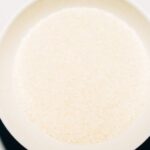How to Create a Pollinator-friendly Garden
Creating a pollinator-friendly garden is not just an enjoyable hobby; it’s a vital contribution to the health of our ecosystems. As pollinators such as bees, butterflies, and hummingbirds face declining populations due to habitat loss and pesticide use, gardeners have a unique opportunity to provide a sanctuary for these essential creatures. By implementing specific strategies and selecting the right plants, you can cultivate a vibrant, thriving space that supports biodiversity.
Choose Native Plants
One of the most effective ways to attract pollinators is through the selection of native plants. These species have evolved alongside local pollinators, making them more appealing and beneficial for the creatures that inhabit your area. Native plants require less water and maintenance, making them ideal for sustainable gardening. Research your region’s native flora and choose a variety of flowering plants that bloom at different times throughout the growing season. This way, you’ll provide a continuous source of nectar and pollen, keeping the pollinator populations thriving.
Create Diverse Habitats
A pollinator-friendly garden isn’t just about planting flowers. Incorporating different habitats within your garden can create a welcoming environment for various pollinators. Design areas with a mix of open spaces and sheltered spots, such as hedges or small trees, to provide refuge and nesting sites. Leave some areas of your garden wild, allowing native grasses and wildflowers to flourish. This diversity not only supports pollinators but also attracts beneficial insects that can help control pests naturally.
Avoid Pesticides
The use of pesticides can have devastating effects on pollinator populations. Many common chemicals are toxic to bees and other beneficial insects, leading to population declines and health issues. To create a truly pollinator-friendly garden, adopt organic gardening practices. Use natural pest control methods, such as introducing predatory insects or employing companion planting techniques. If you must use pesticides, opt for targeted treatments that minimize harm to non-target species and apply them during times when pollinators are least active.
Provide Water Sources
Pollinators need water just as much as they need nectar and pollen. Including a water source in your garden can make it even more inviting. Consider placing shallow dishes filled with fresh water, adding stones for perches, or creating small ponds. Make sure to change the water regularly to keep it clean and prevent mosquito breeding. A reliable water source will attract a variety of pollinators, enhancing the diversity of your garden.
Incorporate a Variety of Flower Shapes and Colors
Different pollinators are attracted to various flower shapes, colors, and scents. To draw in a wide range of species, include a mix of tubular flowers for hummingbirds, flat, open flowers for butterflies, and dense clusters for bees. Choose vibrant colors such as yellow, blue, and purple, which are particularly appealing to pollinators. Additionally, consider planting both annuals and perennials to ensure continuous blooms and a colorful garden throughout the year.
Support Nesting Sites
Pollinators need safe spaces to nest and reproduce. You can support their life cycle by incorporating various nesting sites into your garden. For example, leaving bare patches of soil can attract ground-nesting bees, while providing dead wood or brush piles can create ideal habitats for solitary bees. Consider adding bee hotels designed for cavity-nesting species, which provide perfect nesting sites. By creating these environments, you’ll encourage pollinators to make your garden their home.
Fostering a Healthy Ecosystem
A pollinator-friendly garden plays a crucial role in fostering a healthy ecosystem. By embracing sustainable gardening practices, you not only support the pollinators but also contribute to the well-being of the planet. Engaging with your local community to share knowledge and encourage others to create their own pollinator gardens can amplify these efforts. The more people who participate, the greater the impact on local ecosystems and the protection of these vital species.
By implementing these strategies, you’ll transform your garden into a thriving haven for pollinators. Enjoy the vibrant colors, delightful scents, and the buzzing and fluttering of these essential creatures as they contribute to the beauty and health of your outdoor space.


